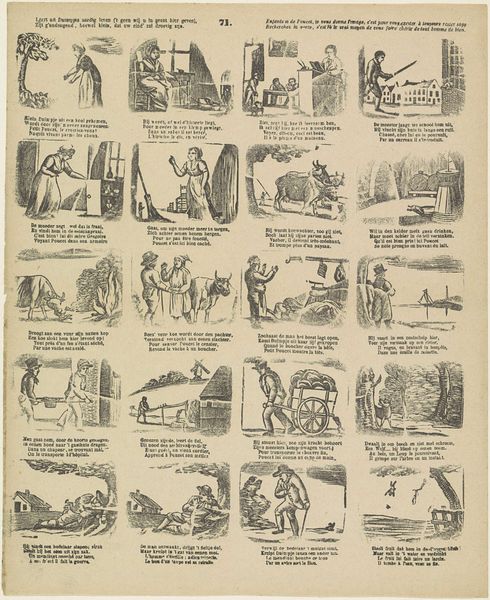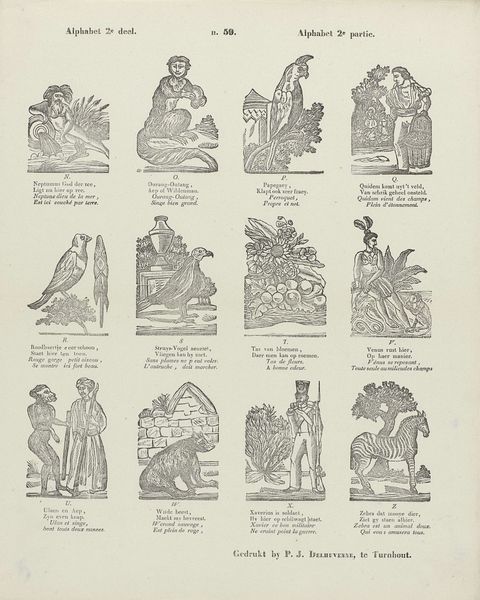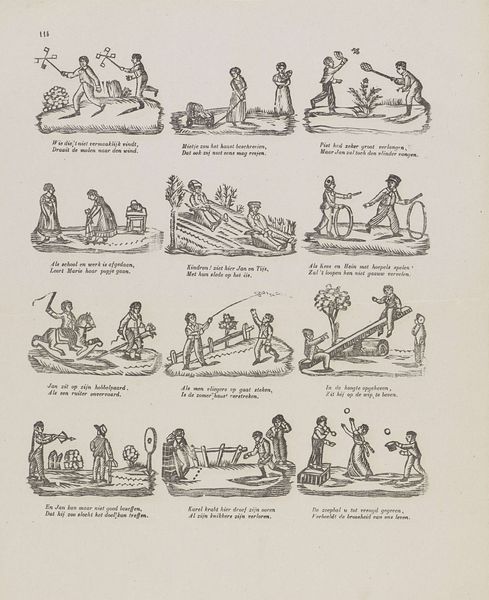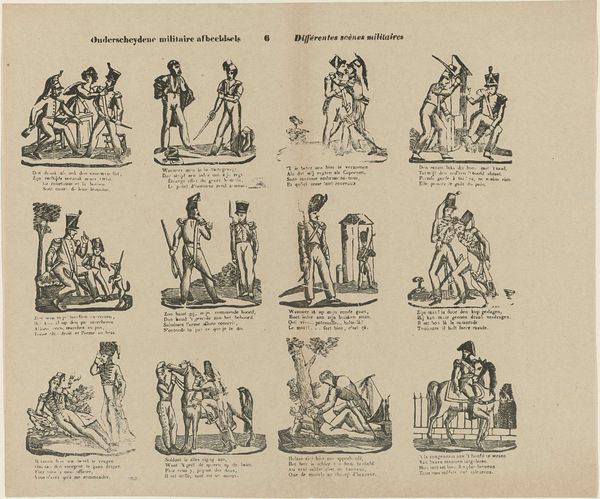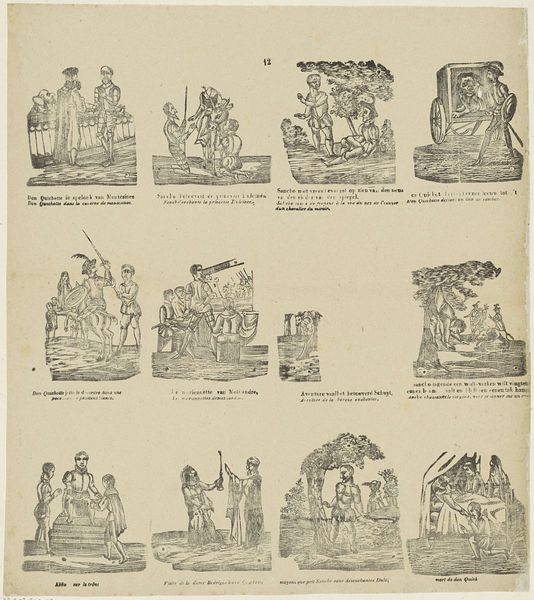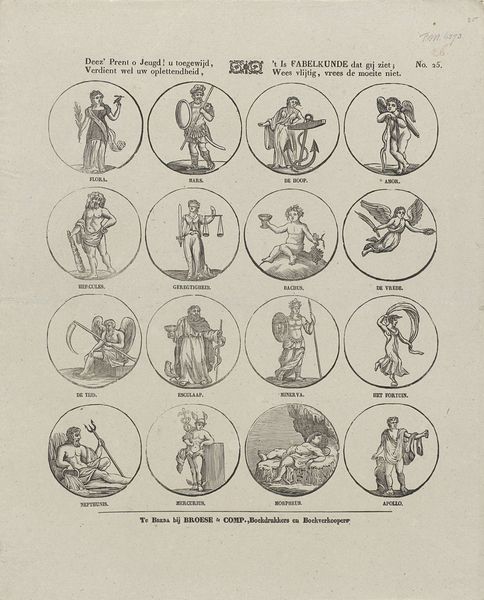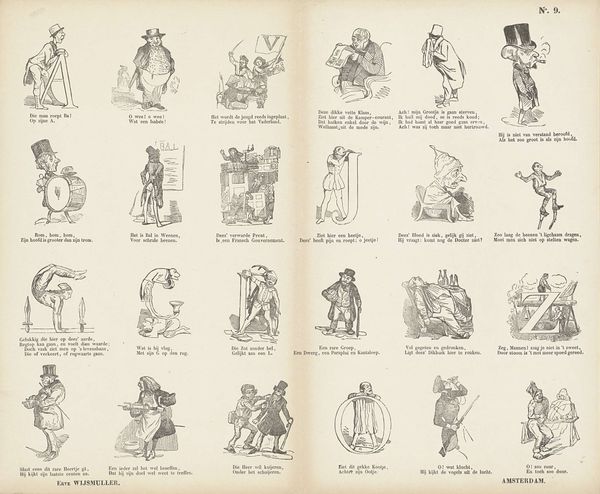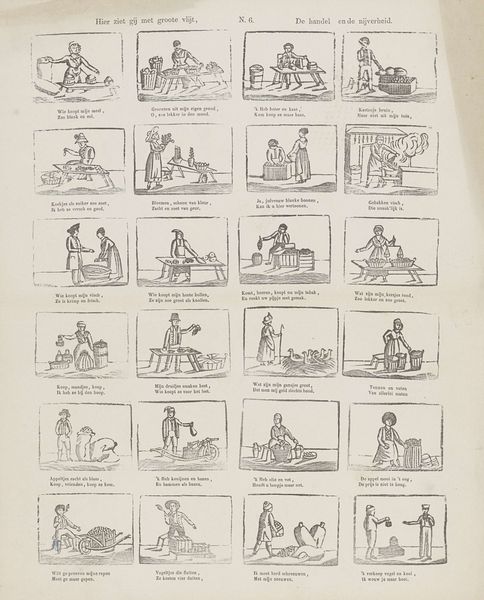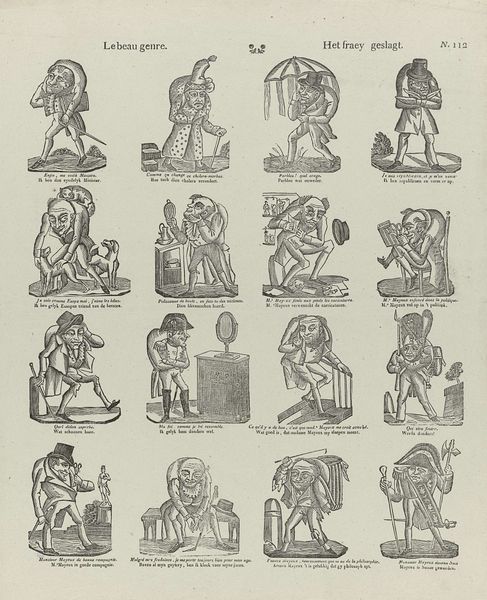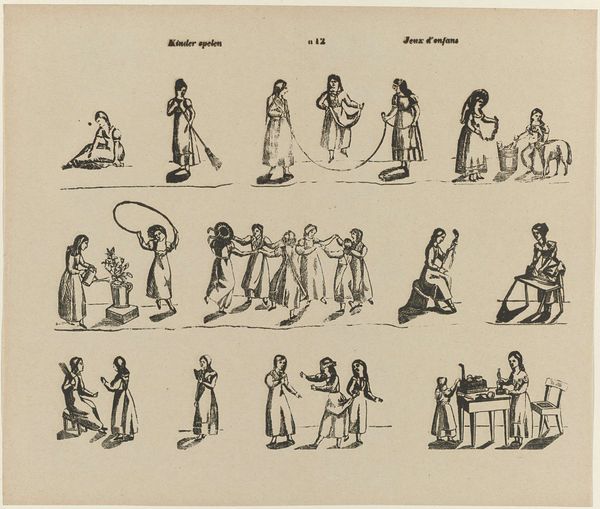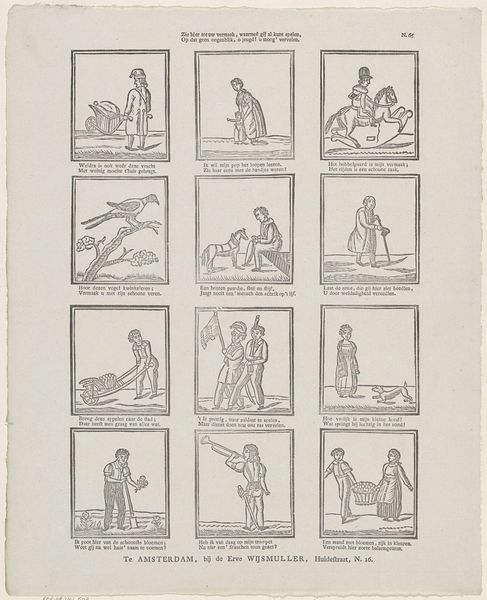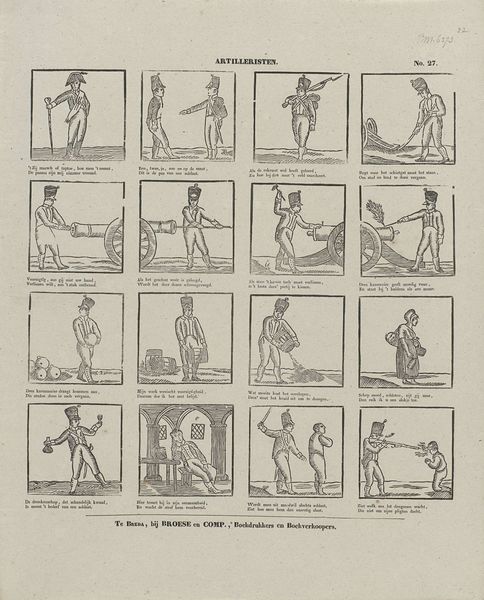
Droevige gevolgen der luiheid / Tristes suites de la paresse 1800 - 1833
0:00
0:00
drawing, print, paper, pen
#
drawing
#
narrative-art
# print
#
paper
#
comic
#
pen
#
genre-painting
Dimensions: height 375 mm, width 305 mm
Copyright: Rijks Museum: Open Domain
Editor: This print, "Droevige gevolgen der luiheid / Tristes suites de la paresse," from sometime between 1800 and 1833 by Philippus Jacobus Brepols, presents a series of small, sequential images, almost like a comic strip. The drawings, created with pen and ink, depict scenes that appear quite bleak and didactic. What's fascinating is how such a potentially serious topic is addressed. How do you interpret this work, particularly its tone and purpose given its time? Curator: Considering the period, it's essential to analyze how social institutions, particularly those focused on moral education, shaped artistic production. Prints like these were widely disseminated, serving as tools for reinforcing societal norms. It wasn’t merely about illustrating "consequences"; it was actively participating in shaping a disciplined populace. Does the serialization of the images strike you as particularly significant? Editor: Yes, it reminds me of educational pamphlets or even early forms of propaganda. Each little scene seems to highlight a specific transgression and its... unpleasant resolution. The repetitive format must have hammered the message home. It makes me wonder about the intended audience. Was it aimed at children directly, or more at parents and educators? Curator: Precisely! The choice of depicting consequences as visually arresting scenes suggests targeting a broad readership, influencing values across demographics. Were museums the only channels, or were there different social locations for its public distribution and performance? What's really striking is the calculated use of imagery in normalizing specific behaviors through this narrative form. Editor: It’s unsettling to think of art being so directly used to control behavior. I now see the piece as not merely an artistic expression but as an artifact revealing societal anxieties and methods of control. Thanks! Curator: Indeed. Looking through the lens of social history changes everything. We move from mere observation to a critical understanding of how images functioned as a means of shaping and regulating individuals within a specific cultural context.
Comments
No comments
Be the first to comment and join the conversation on the ultimate creative platform.

